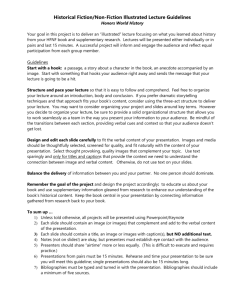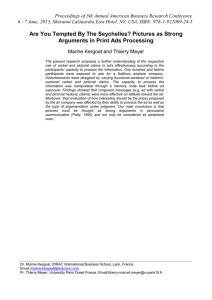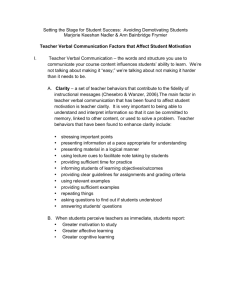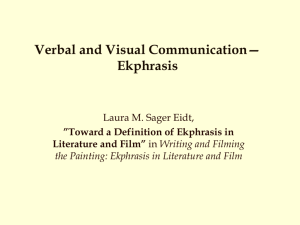The Arts
advertisement
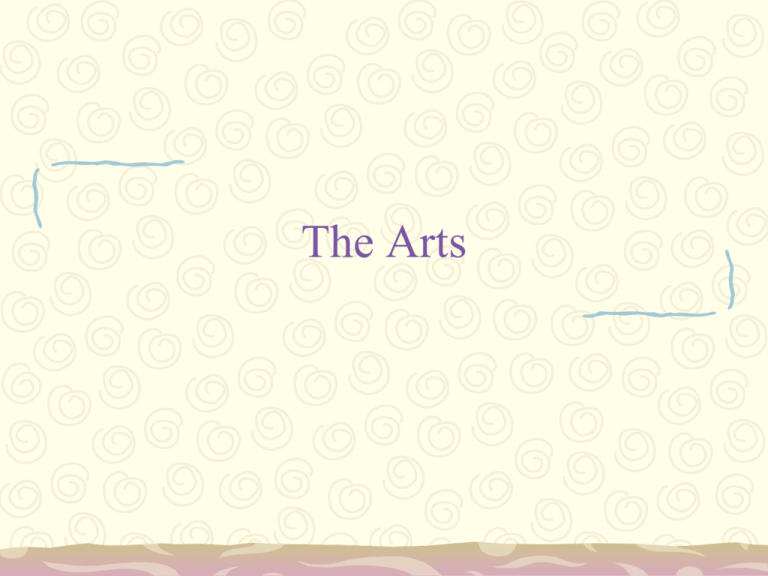
The Arts What Is Art? Art is the creative use of the human imagination to aesthetically interpret, express, and engage life, modifying experienced reality in the process. Most societies past and present have used art to give meaningful expression to almost every part of their culture, including ideas about religion, kinship, and ethnic identity. Views About Art American View – Nonessential Communicate – Feelings – Make statements – Share values Marcel Duchamp, The Fountain, 1917. Art and Anthropology Why study art? – Cultural insight • • • • • Religion Social Structure Lifeways Subsistence Resources What Are the Functions of Art? Myths offer basic explanations about the world and set cultural standards for right behavior. Verbal arts transmit and preserve a culture’s customs and values. Any art form may contribute to the cohesiveness or solidarity of that society. Social Functions of Art Individuality – express individual tastes Social Identity – identify with specific group Social Status – can show wealth, expressed through cars, clothing, etc. Art The creative use of the human imagination to interpret, express, and enjoy life. From the uniquely human ability to use symbols to give shape and significance to the physical world for more than just a utilitarian purpose. Art for Arts Sake Art for Ritual – Not to be seen by all • Tutankhamen – Not to be saved for posterity • Navajo • Johann Sebastian Bach Types of Art Verbal arts – Folklore Music – Verbal – Nonverbal Pictorial Arts – Painting – Sculpture Verbal arts Stories within a culture reflecting a history, gender relationships, proper or improper behavior, or religious beliefs. Examples: Narratives, dramas, poetry, incantations, proverbs, compliments, and insults. art Verbal Arts - Myth Religious A myth provides rationale for religious beliefs and practices. Creation myths Verbal Arts – Legend Stories told as true Common elements – – – – No known author Multiple versions Detail Insight to society Verbal Arts - Tale Common elements – – – – Secular Nonhistorical Entertainment May be moralistic Motif – Story situation Verbal Arts – Poetry and Epics Poetry - Allows for inappropriate subjects to be talked about – Epics - Long oral narratives, sometimes in poetry or rhythmic prose, recounting the glorious events in the life of a real or legendary person. Music Ethnomusicology – Study of music in a specific culture. Anthropology studies how a culture defines music. art Music Verbal and nonverbal Abstract emotion Define – Indigenous terms – Musical lingo • Melody, rhythm, form Components – Repetition – Tonality Functions of Music Group identification Self-identification Political commentary Social commentary Social function – Entertainment – Work – Oral tradition Pictorial Arts A type of symbolic expression that can be realistic or abstract. Aesthetic approach - Looks at technique and form. Narrative approach - Looks at what is depicted. Interpretive approach – Looks at symbols and beliefs that are depicted in art, a knowledge of these must first be understood. art Pictorial Art Various mediums – Drawing, painting, sketching, etc… – Walls, rock, fibers, wood, animal hide, plants, clay, etc… Symbolic expression Rock Art Pictographs – Painting Petroglyph – Pecking Anthropomorphic Animals Abstract Ritualistic Non-Representational Meaning Entoptic phenomena – Trance phase 1 – Nervous system – Geometric patterns Construal – Trance phase 2 – Brain makes sense of image Representational Naturalistic Western art Abstracted – Style – Technique – Ability Art and Iconography Symbols Colors Meaning to culture Hard to decipher Sculpture Many forms – Relief – In the round Media – Marble – Mixed





